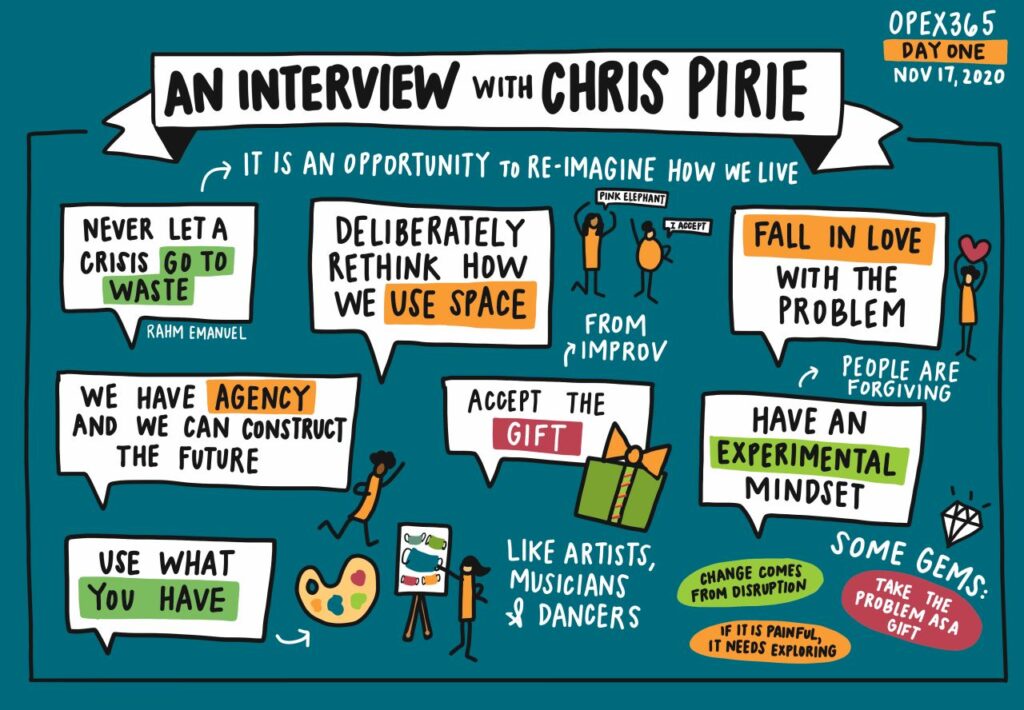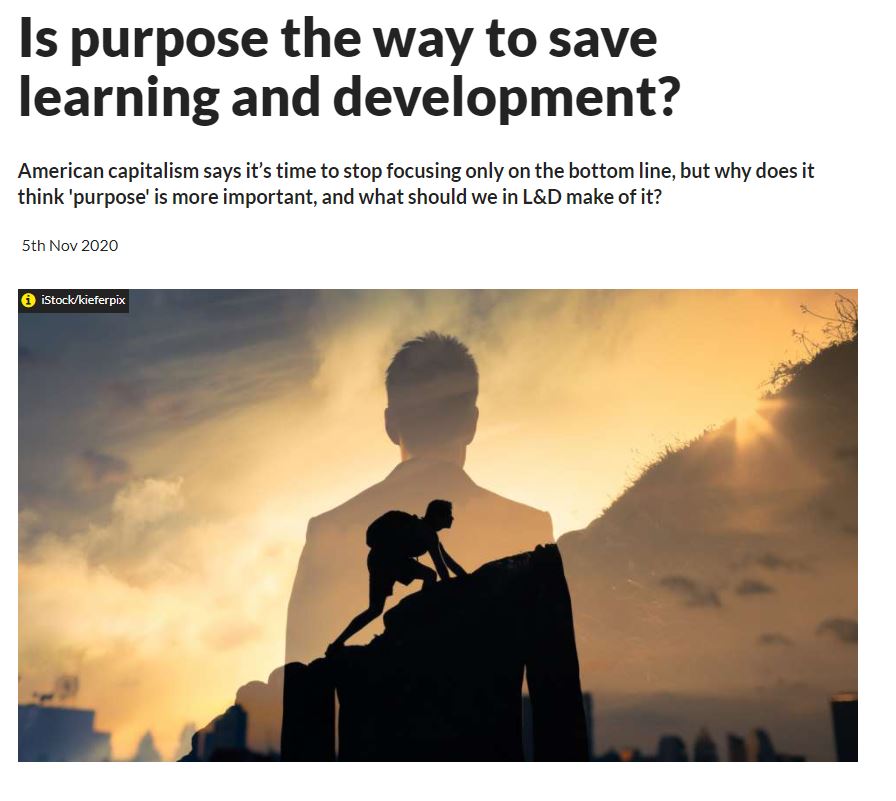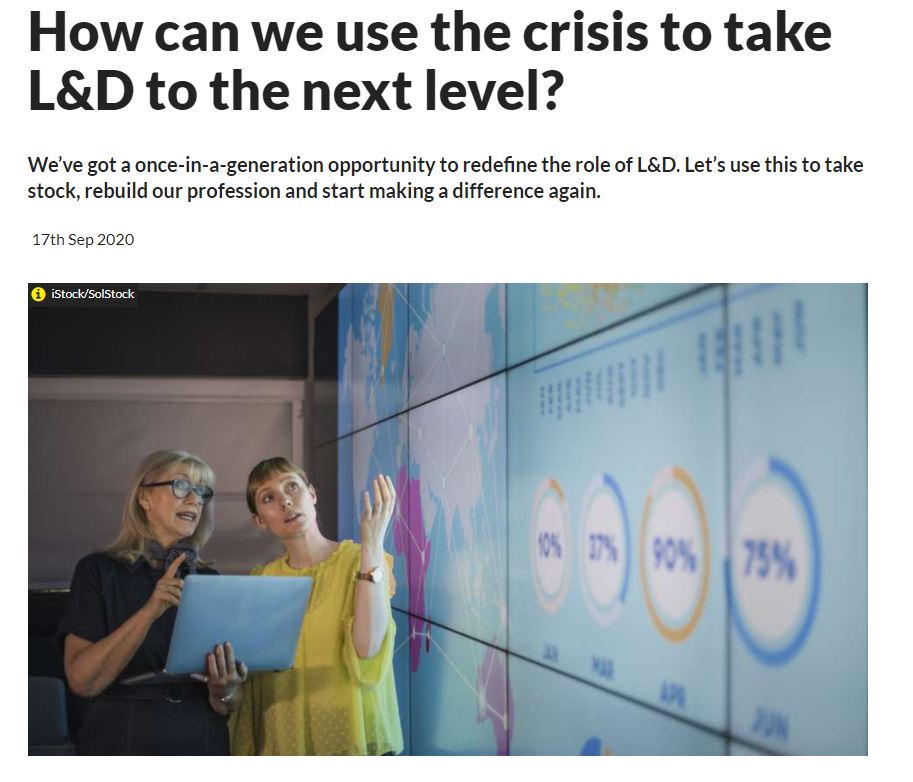
Accelerating ‘human momentum’: a unique opportunity to design a better way of working. Read our blog for the Aid Industry learning collective organized by www.Humentum.org at their web site here full text below:
Learning Futures Group CEO and Humentum Board Member Chris Pirie sees much to be optimistic about, and much work to do as 2021 nears for Humentum, its mission and its members.
Through a series of very happy accidents, I was privileged, in July 2017, to be among a group of board members who led a successful merger of three leading sector organizations in different geographies. With all three focused on driving innovation and impact in the international aid sector, the decision was sparked by us all becoming convinced that together, we could accomplish so much more than as individual organizations —the result: Humentum.
The name embodies the humanitarian impulse at the core of the aid and development community, and its desire to always push for better impact and efficiency in terms of global and local capacity building. As a result, we ended up with a global membership association with the capacity to provide effective training, convening, consultancy, and support to hundreds of humanitarian and development organizations working for social good.
We also contribute further by helping leaders better manage compliance and risk, manage finances, design better programs, and support in-country project staff to ensure they perform at their best. Fast forward to November of 2020, and wow, things are different. Now, smarts and optimism are the minimum price of entry of any work trying to navigate a global pandemic, a tumultuous political climate, and widespread re-thinking of social justice issues.
Disruption and uncertainty for sure–but also an extraordinary opportunity to re-design the future.
That’s a triple threat of disruption that’s rocking the $200 billion international aid industry, the workplace, and life itself. Like everyone else, Humentum and its members these past months have been deep in the process of figuring out how to survive and continue to create value. We embraced the reality that we were at an inflection point—facing a shift to a very new phase. The good news is that while it’s a phase that brings disruption and uncertainty, it’s also an extraordinary opportunity to re-design the future.
Phase one: as lockdown started, our work was thrown into a scary new mix of panic, fear, loss, isolation, and sadness. But prompted by a sense of urgency, we also felt the thrill of finding new digital solutions and workarounds to get the job done–and even some pleasure at the opportunity to re-examine assumptions about time, work, and technology.
Perhaps many discovered a COVID-19 silver lining in the shrinking of our worlds and a refocus on friends and family. Counterintuitively, Zoom created a new sense of humanity as we spend virtual time with coworkers in their homes, the occasional guest appearances from younger family members and pets reminding us that we aren’t in the office anymore. As a species, we were able to pivot (an early candidate for word of 2020?) a reconnection with the local. And many leaders finally saw the value and benefit of remote working as they experienced it themselves for the first time. There was a sense of experimentation and flexibility around convening and working at a distance.
Phase two: downturn! Summer in the northern hemisphere brought fatigue, disruption to work, and schooling began to take its toll. Productivity started to slip, the school leavers and recently unemployed/furloughed faced tough prospects. At the same time, unresolved inequities, gender bias, and let’s be frank, regrettable amounts of systemic racism in both the workplace and society came under the spotlight. As a society, we began to question some core assumptions about the progress (or the lack thereof) we thought we’d made in terms of social justice, and how we reflect on our core values in society and at work.
Our work there is far from done. But that didn’t stop a…
Phase Three: planning a massive re-design. From the conversations I’m having with workplace learning and talent teams across the world, it feels like people and teams are starting to think about how we might assemble a much better world of work than the one we are leaving behind.
As we inevitably begin to control the health crisis, we get to ask critical questions about how we rebuild. What lessons have we learned? The good news is that we don’t have to snap back to what we were before; nor should we. Instead, we get to put our work and industry back in ways that make sense.
Here are four critical design questions the aid sector will have to face, but genuinely has the opportunity to answer:
New thinking about the physical environment
Space is important, especially if you are in the convening business; hundreds of years of design have gone into how we organize our physical workplaces, offices, labs, classrooms, and conference centers. After all, the watercooler plays a critical role in how we form and exchange ideas and create collective value. But what kind of space do we want to work in now? Some organizations, including Humentum, were already highly evolved towards a virtual work environment, with a global team operating efficiently online and creative ways to connect and build a shared culture through innovative use of digital tools and thoughtful scheduling. But virtual work does not mean just working from home, and the home office playing field is not a level one. Humentum, for example, has experimented with sharing office space with and between its members; hoteling, hotdesking, and open plan, are all viable models, too, and you may well have already experimented with variants.
Of course, there are cost and even climate implications here, but there are real opportunities for organizations to downsize their real estate portfolio. In a more virus-conscious future, will sharing and open plan give way to more private and contained workspaces? The jury is out, but the design choice is yours.
New thinking about the organizational ethos
Culture is the glue that binds an organization together, especially in the not-for-profit world, where a shared sense of purpose and focus have always been a powerful base for collaboration, a sense of purpose, and shared goals. But in tomorrow’s more socially-distant virtual world of work, connection with humanity might be diluted when we can no longer physically connect with our fellow workers—and perhaps even more importantly, the people we aim to serve and help. And in the light of a new openness to debating social injustice and inequalities at work in our society and workplace, surely a new culture of work can be built that includes deliberate attempts to correct injustice.
Travel
Here, founding president and Devex editor-in-chief Raj Kumar has written an excellent article on the future of travel in our sector. He writes, “For better or worse, global development work is synonymous with travel. There are field visits, missions, official delegations, conferences, and short- and long-term overseas consultancies. ‘Where have you been recently?’ is a common question during small talk in the hallways of international organizations.”
Indeed, the chance to travel is often a motivator and benefit for workers doing work that is often less well rewarded than the commercial equivalent. Raj goes on to detail experiments in contactless aid and an acceleration in local hiring and capacity building that had long been an aspiration for progressive thinkers in the sector. Expense reduction, donor expectations, climate benefits and the acceleration of local capacity building ought to drive travel policy for our future of aid work. I expect and welcome some travel coming back, but only if truly justifiable against these metrics.
New ways of thinking about the value exchange of labor
The fourth industrial revolution was already underway, thanks to a convergence of technologies. The pandemic accelerated it and will inevitably change the kind of work we do (think, our relationship with increasingly capable robot coworkers). But more than that, it will likely change the very way we exchange our labor for pay. Ubiquitous gig work, the reality of a 100-year career brought about by improving health and life expectancy, and the lifelong need to develop new skills to stay relevant will likely see us abandoning single employer models in favor of more flexibility.
The aid industry is ahead on all these factors, having been in large part a gig economy hiring off the back of intermittent project funding, and with a unifying motivation of providing the cultural glue to connect volunteers, consultants, funders, as well as traditional employees. The big question here is how we will balance the benefits of flexible and skills centric work with the need to provide hard benefits, fair and safe conditions, and employment protection when these are governed and managed based on the old single employer model? I’m optimistic, but the work is yet to be done.
Let’s work together
2020 has been tough, but the good news is there is so much potential for positive change going forward, on many fronts; it’s all up for grabs. It’s time for structured conversations about you and your team’s future, thoughtful process re-design, and deep collaboration.
Organizations like Humentum are uniquely positioned to lead the discussion and form the kind of coalitions needed to re-think, re-design and execute these new approaches to a more impactful and human model of work.
Will you join them?
The author is CEO of The Learning Futures Group, the former Chief Learning Office at Microsoft and host of the Podcast Learning Is The New Working about the future of workplace learning and how to get there.



